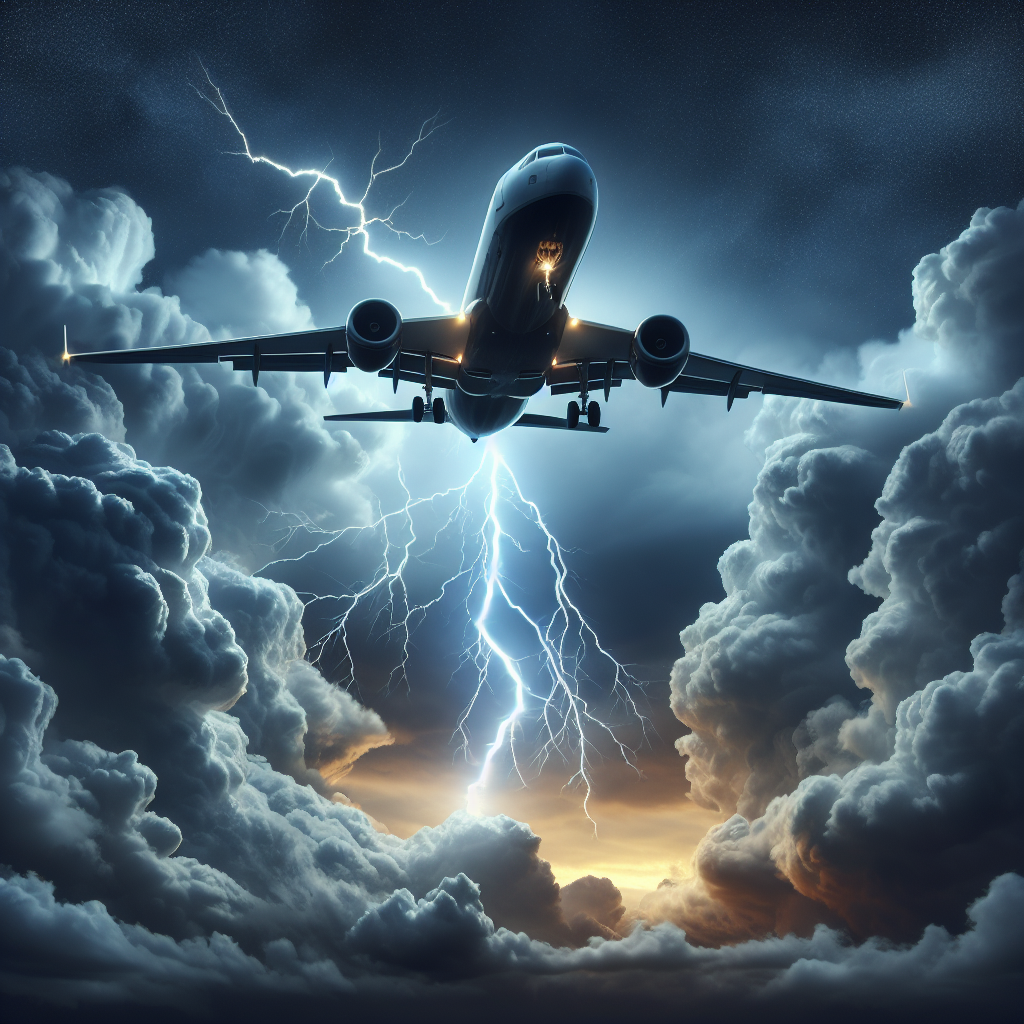In order to reduce costs, airlines are seeking to shorten the turnaround time of airplanes and use them as much as possible, so they cannot wait for perfect weather conditions to take off. When the weather is bad, airplanes are at risk of being struck by lightning. So, what happens if an airplane is hit by lightning? Will it fall from the sky?
According to the aviation news website “Simple Flying,” airplanes are actually struck by lightning more frequently than one might imagine. For commercial flights with tight schedules, these thunderstrike incidents typically occur a few times a year. Under normal circumstances, the impact of lightning is minimal, and the airplane can continue its flight as scheduled. However, lightning strikes can occasionally lead to aircraft damage or even crashes.
An Air New Zealand Boeing 787-9 plane experienced a lightning strike incident earlier this month. The aircraft was preparing to fly from New York, USA to Auckland, New Zealand, but before takeoff, it was struck by lightning during a severe thunderstorm, leading to the cancellation of the entire flight, and all passengers had to be rebooked on other flights.
The next day, the aircraft, with registration ZK-NZL and only 7 years old, underwent a series of inspections and resumed normal operations several days later.
However, lightning strikes typically do not have such a significant impact on airlines. For example, in March of this year, an Air Canada Boeing 777-300ER flying from Vancouver to London was struck by lightning during takeoff with no damage, continuing its journey to the destination.
A spokesperson for the company stated that these aircraft are designed to withstand such lightning strikes. In fact, airplanes often trigger lightning strikes because their presence strengthens the electric field in the environment during thunderstorms, enhancing electrical breakdown in the air.
Lightning strikes most commonly occur when airplanes pass through cloud layers, usually at altitudes of 5,000 to 15,000 feet. The areas most often struck on airplanes are the sharp points, such as wingtips or the nose.
When an airplane is struck by lightning, its exterior can act as a conductor, allowing the electric current to dissipate without causing damage. The aircraft’s design includes a Faraday cage to allow the lightning’s current to flow in and out of the airplane without affecting its interior or passengers.
Furthermore, airplanes are coated with anti-static paint, which means lightning strikes do not damage the aircraft. The fuel tanks of airplanes are also lined with liquid sealing pads to protect them from lightning strikes.
The aircraft’s wiring is also insulated for lightning protection. This means the aircraft can continue flying if a lightning strike occurs, and pilots can still control critical onboard systems.
In most cases, airplanes can continue flying normally after a lightning strike. However, if the crew determines that the airplane’s displays or systems have been affected, they might choose to reroute the aircraft to the nearest airport.
Although extremely rare, there have been cases of airplanes crashing due to lightning strikes. In December 1968, a Pan Am airplane flying from San Juan, Puerto Rico to Philadelphia was struck by lightning, igniting the fuel tanks and resulting in an explosion. The plane ultimately crashed, killing 81 people onboard.
Since then, the Federal Aviation Administration in the United States has required additional safety measures on aircraft to avoid any potential losses due to lightning strikes.
The deadliest incident involving a lightning strike in aviation history occurred in December 1971. A LANSA plane flying from Lima to Iquitos in Peru was struck by lightning and crashed, with only one survivor among the 92 people onboard.
If an airplane is struck by lightning, any impact is likely to be minimal. However, for passengers onboard, it can still be a frightening experience. Pegasus Airlines has provided some recommendations for passengers on their website on what to do if they encounter lightning or turbulence:
– Do not stand up in case of lightning or turbulence. Stay calm and follow the instructions of the flight attendants.
– There may be a loud bang when the electric current is discharged from the lightning strike, but there is no need to worry.
– Remember that airplanes are designed with equipment similar to lightning rods, which is why passengers are not at risk of being struck by lightning while onboard.
– After a lightning strike, you can try to comfort fellow passengers or wait for further assistance from the flight crew.

